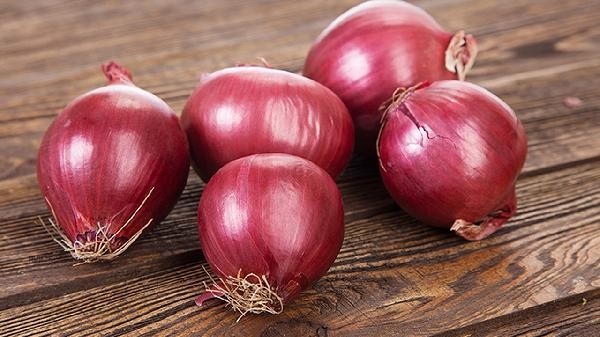During exercise, onions can be eaten raw or cooked, depending on individual digestive ability and nutritional needs. Raw onions retain more vitamin C and sulfides, while cooked onions are easier to digest and have a prominent sweet taste. The main points include preserving nutrients when eaten raw, reducing irritation when cooked, pairing protein, controlling intake, and precautions for special populations.

1. Raw onions retain nutrients
Raw onions are rich in vitamin C and organic sulfur compounds, which are easily lost during high-temperature cooking. Eating raw onions can maximize their antioxidant and anti-inflammatory effects, which is helpful for recovery after exercise. You can slice onions thinly and mix them with salads or sandwiches, and pair them with olive oil to promote the absorption of fat soluble nutrients.
2. Eating cooked onions reduces irritation
After heating, onions have a sweeter and softer taste, with reduced levels of irritating sulfides, making them suitable for people with weaker gastrointestinal function. Stir frying or grilling can caramelize the natural sugars in onions, adding flavor layers. It is recommended to stir fry with a small amount of oil at low temperature to avoid damaging the nutritional components at high temperatures. Cooked onions are suitable for pairing with eggs or chicken breast.
3. Protein pairing
Quercetin in onions can increase absorption when combined with animal protein. Fitness enthusiasts can eat raw onions with boiled shrimp or chicken breast, or add caramelized onions to steak for seasoning. Fermented onion kimchi contains probiotics, which can form a complete plant protein combination when paired with soy products.

Fourth, Control Intake
The recommended daily intake of onions is between 50-100 grams. Eating too much raw food may cause bloating in the stomach, while eating too much cooked food may result in excessive intake of cooking oils and fats. After strength training, it is advisable to increase the intake of raw onions appropriately. Aerobic training is more suitable for supplementing carbohydrates with a small amount of cooked onions.
V. Precautions for Special Groups
Patients with gastroesophageal reflux should avoid consuming raw onions on an empty stomach, and those with irritable bowel syndrome are recommended to choose cooked onions. When sweating heavily after exercise, the antibacterial effect of raw onions can help prevent skin infections, but it should be noted that it may worsen body odor. People taking anticoagulant drugs should consult a doctor about onion intake.

Onion in fitness diet is recommended to be flexibly adjusted according to training goals. During the muscle building phase, more cooked onions can be used to supplement energy, while during the fat loss phase, raw onions are suitable for improving metabolism. Pay attention to individual tolerance, and start with a small amount when trying to eat raw for the first time. Avoid direct sunlight when storing, as purple onion has higher nutritional value. Pairing with foods rich in vitamin E, such as nuts, can enhance the antioxidant effect of onions. Avoid consuming large amounts of raw onions within two hours before and after exercise to prevent gastrointestinal discomfort from affecting training status.






Comments (0)
Leave a Comment
No comments yet
Be the first to share your thoughts!